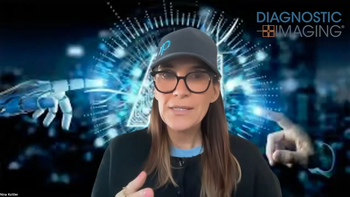
The Pixel: Pathology or Pest?
A radiologist’s battle with a taunting pixel: I think I won, for now.
I stared at the gray dot on my monitor. Actually, I was staring at a number of dots around it, too, but this particular pixel was the troublemaker. It was a data-point which tipped the balance from one diagnostic consideration to another. Fluid simple versus complex, structure-wall thin or thick, cortex or blood, etc. More generally speaking, interpretative confidence rendered uncertain.
Somehow, I got the distinct impression the pixel was smirking at me. Did it just flip me off? I must be overdue for a break. It was an ungodly hour, after all, and I’d lost count of how many cases I’d read thus far. Come off it, I told myself; it’s probably just an artifact. Blow it off and move on.
“Go ahead,” the pixel sneered. “I dare you.”
Yep…definitely overdue for some coffee. I went and got myself a cup of mud. When I returned, though, the pixel hadn’t miraculously vanished. Nor had the impish persona with which my beleaguered mind had imbued it: “Well? Are you going to deal with me now, or are we going to look at each other some more?”
“I’m not afraid of you,” I said. What the hey, I work from home. The only individual who might notice me acting crazy, talking to a computer screen, is my cat, and even she was asleep.
“Oh, suuuuure you’re not,” the pixel retorted. “Confident, assertive radiologist you are. Let’s go back and count how many weasel-words and hedges you’ve put in your reports so far tonight. What’s a good over/under for that-100? 200?”
“Imaging doesn’t always give a conclusive answer,” I half-pleaded as if the pixel would see my side of things and gracefully go away. “I’m not doing patients any favors if I pretend otherwise.”
“Oh, so you think I might be ‘real’ pathology then? Go on, say so in your report. Better yet, call up the referring doc and tell him he’s got a surgical emergency on his hands because of me.”
I glared at the pixel. “I’m not doing that. You know as well as I do that you’re a diagnostic fake out.”
“Put your dictaphone where your mouth is, then,” it taunted. “Don’t even mention me in your report. I’m sure you won’t be hearing about it from the surgeon tomorrow. Or the peer-review committee. Or some guy handing you malpractice-claim papers in a couple of years.”
I reached for the phone. The pixel was astonished. “You-you’re really going to call me in as a positive case? Wow, even I didn’t expect that!” I ignored it as I got on the line with the technologist and asked for some additional images to be sent my way.
Call completed, I turned back to my antagonist. It was not amused. “Think that’s going to resolve the issue? How do you know I won’t be on the next set of images, too? Or you’ll see one of my buddies, giving you a whole new problem?”
But the pixel’s spell over me was broken, at least for the time being, and it was banished from my screen with a click of the “next case” button.
Newsletter
Stay at the forefront of radiology with the Diagnostic Imaging newsletter, delivering the latest news, clinical insights, and imaging advancements for today’s radiologists.




























